Presenters: David Bondurant and Matt Francis
Overview
David Bondurant reviews 50 years of Semiconductor and Computer Technology History, using his personal life story to provide background to highlight the driving forces behind the $52B CHIPS Act, passed in 2022.
Following the invention of the transistor in 1947, the US semiconductor industry led the world in innovation in semiconductors from 1950 through 1980, as Moore’s Law shrunk transistors and increased the complexity of chips. In 1975, Japan’s government began investing in semiconductor technology with their largest firms. Their focused DRAM program rapidly captured 50% of the semiconductor market and drove most US DRAM companies from the market. The US responded with the Very High Speed Integrated Circuits (VHSIC) program in 1980. By the end of the 1980s, the Berlin Wall fell and the US maintained its leadership in supercomputers. In 1983, Korea joined the world competition, beginning development of DRAM products. By 1993, they had overtaken the Japanese and have become the leading supplier of DRAM. In the 1990s, they developed non-volatile NAND Flash products and became the leading supplier of all commodity memory products by the 2000s. During the same time period, Taiwan entered the semiconductor foundry market focused on highly integrated logic chips, investing in increasing costly factories. By the 2000s, they became the leader in silicon foundries and the US went increasingly fabless, with companies such as Apple, Qualcomm, AMD, and Nvidia depending upon offshore foundries. In 2014, China launched its $150B Big Fund to become competitive in the world market. By 2022, a focused Chinese effort in 5G wireless communication has made them a world leader in this technology and they are gaining ground in memory and logic. The most semiconductors are no longer being manufactured in the US. Taiwan and Korea have gained technical leadership. As Moore’s Law hits the wall, new Beyond Moore technologies in semiconductor process and packaging require us to maintain our semiconductor leadership so that we keep computer leadership and security.
Matt Francis reviews the details of the $52B CHIPS Act. The Act subsidizes and expands existing facilities to increase onshore supply, returns leading edge manufacturing to the US, reinforces our traditional strengths in chip design and equipment, and grows the US Workforce to support the expanded manufacturing. New technology centers strengthen R&D throughout all regions of the US.
About The Presenters
 David Bondurant is a 50-year IEEE Life Senior Member. He developed computers at Control Data and Univac in the 1970s, VHSIC semiconductor and computer-aided design technology at Honeywell in the 1980s, and advanced memory technologies in 1990s and 2000s at companies like Ramtron, Enhanced Memory Systems, Simtek, Freescale & Everspin Technologies. In retirement, he volunteers with the IEEE and Computer Society working with Chapters and members around the world.
David Bondurant is a 50-year IEEE Life Senior Member. He developed computers at Control Data and Univac in the 1970s, VHSIC semiconductor and computer-aided design technology at Honeywell in the 1980s, and advanced memory technologies in 1990s and 2000s at companies like Ramtron, Enhanced Memory Systems, Simtek, Freescale & Everspin Technologies. In retirement, he volunteers with the IEEE and Computer Society working with Chapters and members around the world.
 A. Matt Francis, Ph.D. is founder and President/CEO of Ozark Integrated Circuits, Inc (Fayetteville, AR). He holds BSEE, BS Physics, MS and PhD degrees from the University of Arkansas. At Ozark IC, he leads development of high-temperature semiconductor computing solutions for energy, defense, aerospace and space applications, and has served as a remote payload specialist for Ozark IC’s payloads on the International Space Station. He coordinates complex semiconductor (thin-film, thick-film and packaging) supply chains, and serves in a number of advisory and elected roles within government and industry. Within IEEE, he serves as a Region Director, Elect (Region 5 USA Southwest), as the IEEE-USA representative to the IEEE Industry Engagement Committee, and in numerous committees within IEEE MGA. He is also an advisor to science-based startups through the Winrock International Science Venture Studio.
A. Matt Francis, Ph.D. is founder and President/CEO of Ozark Integrated Circuits, Inc (Fayetteville, AR). He holds BSEE, BS Physics, MS and PhD degrees from the University of Arkansas. At Ozark IC, he leads development of high-temperature semiconductor computing solutions for energy, defense, aerospace and space applications, and has served as a remote payload specialist for Ozark IC’s payloads on the International Space Station. He coordinates complex semiconductor (thin-film, thick-film and packaging) supply chains, and serves in a number of advisory and elected roles within government and industry. Within IEEE, he serves as a Region Director, Elect (Region 5 USA Southwest), as the IEEE-USA representative to the IEEE Industry Engagement Committee, and in numerous committees within IEEE MGA. He is also an advisor to science-based startups through the Winrock International Science Venture Studio.











